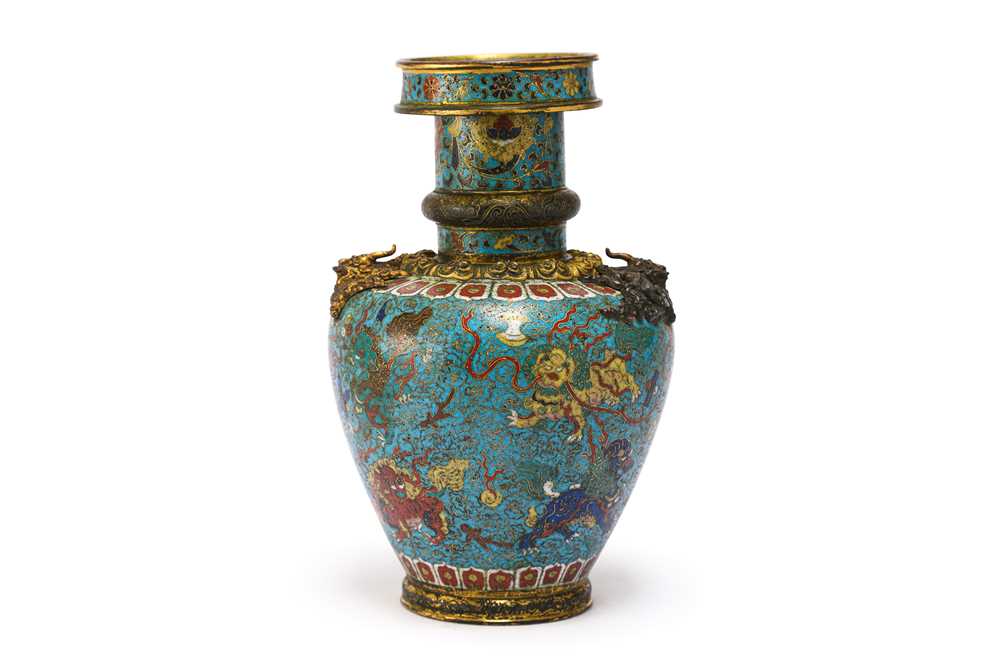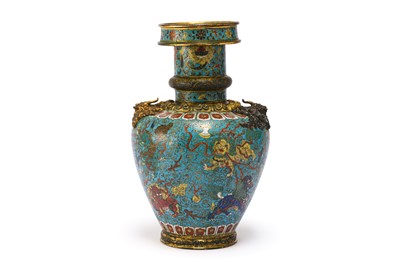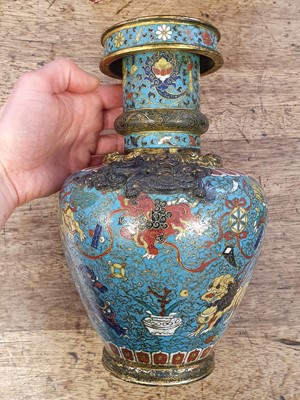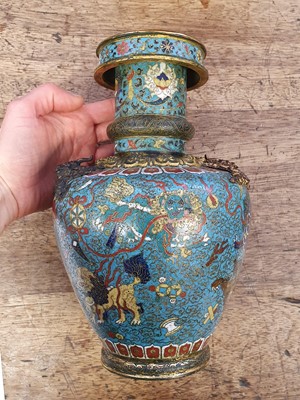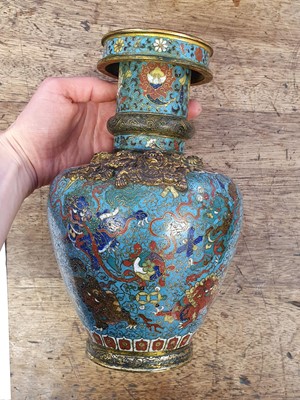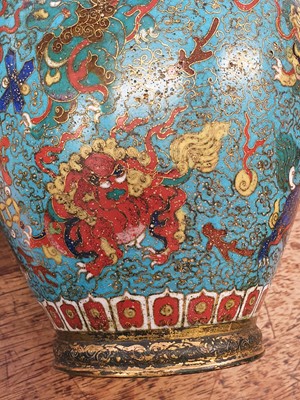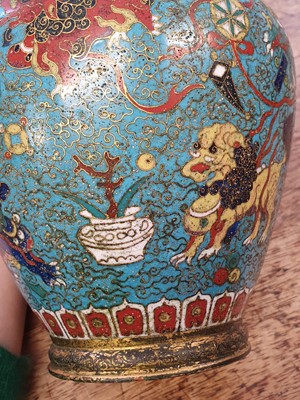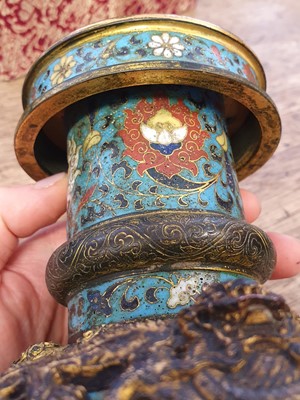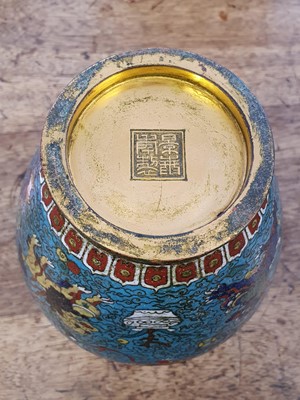1st Jun, 2021 10:00
Chinese Art: 100 Stories
A CHINESE GILT BRONZE AND CLOISONNÉ ENAMEL 'LION DOGS' BUDDHIST LONGEVITY VASE, BUMPA.
A CHINESE GILT BRONZE AND CLOISONNÉ ENAMEL 'LION DOGS' BUDDHIST LONGEVITY VASE, BUMPA.
Ming Dynasty, 16th Century.
The ovoid body cast rising from an incised gilt bronze foot to broad rounded shoulders, surmounted by a waisted neck and a flange encircling the rim, the exterior of the body brilliantly decorated with nine Buddhist lion dogs frolicking among the Bajixiang and ribboned balls, all between borders of lotus lappets encircling the shoulder and foot, the shoulders set with a further band of raised gilt-bronze lappets, and set on either side with a pair of mythical gilt bronze sprawling luduan creatures, the neck adorned with two bands divided by an incised gilt-bronze raised band, the upper being composed of four lotus flowers borne on a leafy stem, the lower of sprays of lingzhi fungus, the rim bordered with a classic scroll band above a frieze of florettes, the dense design brilliantly decorated in tones of red, yellow, white, blue and green cloisonné enamels against a bright turquoise ground, a four character Jingtai nianzhi seal mark to the underside, 25cm H, 2kg.
Provenance: from a French diplomatic collection.
明十六世紀 銅胎掐絲琺瑯佛獅紋賁巴壺,陽文「景泰年製」篆書款
來源:法國外交官藏品。
The present vase is similar to a small number of vessels within the Chinese Imperial collection of which the closest is illustrated in Compendium Collection of the Palace Museum, Enamels, 2011, cat no 62.
The form of the Buddhist longevity vase, bumpa, was originally a water container used in Tibetan Buddhist ceremonies. Chinese Imperial Court archives show that bumpa were used to contain holy herbs or peacock feathers. They became a central part of Imperial ritual processes during the Qianlong era, and in the fifty-seventh year of the reign of the Emperor Qianlong, a bumpa was used to draw lots to determine the succession of the highest Tibetan and Mongolian lamas of the Gelugpa order.
The lion is in China a symbol of protection and law, and from the Tang dynasty, appeared in decorative arts. The Buddha's teachings are often referred to as the 'lion's roar' in the sutras, indicating their power and nobility. Buddhist lions playing with a brocade ball became the most popular form of imagery for the lion and appear during the Ming dynasty.
Compare with a very similar cloisonné-enamel ewer and cover, 16th century, which was sold at Christie's Paris, 7 December 2007, lot 6. See also an ewer formerly in the Kitson Collection and then in the Pierre Uldry Collection, illustrated in H. Brinker and A. Lutz, Chinesisches Cloisonné - Die Sammlung Pierre Uldry Museum Rietberg, Zurich 1985, pl.98, and a dish bearing similar decoration may be found on the dish illustrated in C. Brown, Chinese Cloisonné - The Clague Collection, Phoenix Art Museum, 1980, pp.22-23, pl.3.
Do you have an item similar to the item above? If so please click the link below to submit a free online valuation request through our website.
